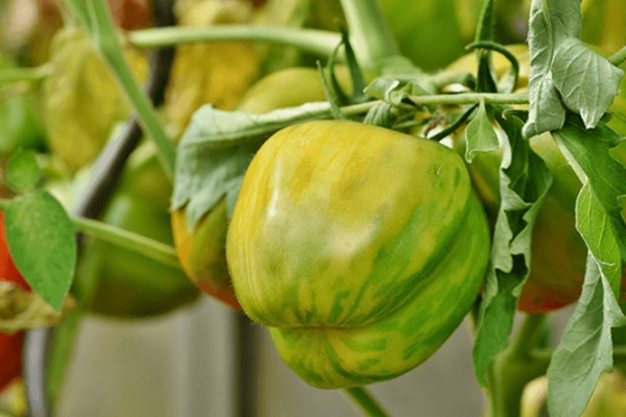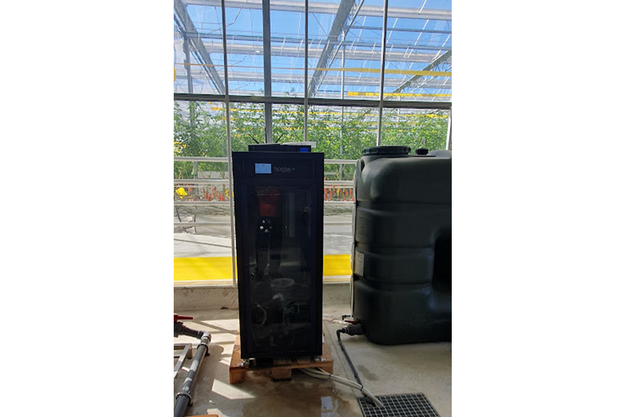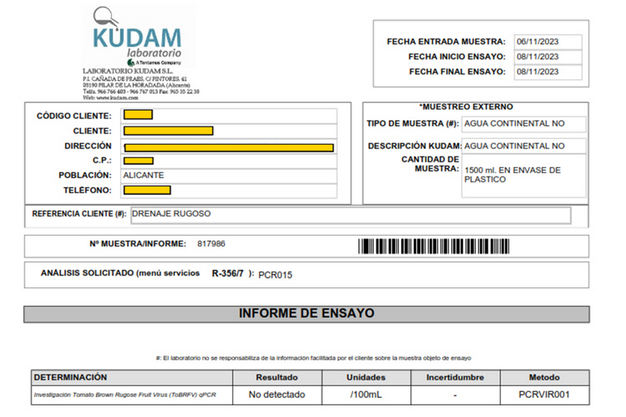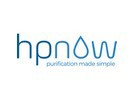According to HPNow, the rugose brown virus, also known as the Tomato brown rugose fruit virus (ToBRFV), is a disease that affects plants in the Solanaceae family (such as tomatoes, peppers, and eggplants. It is an RNA virus that spreads mainly through seeds, direct contact with infected plants, and insect vectors.
Symptoms of rugose brown virus infection include brown spots on leaves, fruit growth distortion, deformities, and roughness on the surface. This can lead to a decrease in crop quality and reduce yield.

Tomato fruits infected by ToBRFV
The rugose virus primarily affects this family and can cause severe losses in plantations. It spreads rapidly through infected seeds, insects, and contaminated tools. Once detected in a plantation, it is difficult to control and may require the destruction of entire crops to prevent its spread.
The company lists the five main effects:
According to HP, there's several effects of the rugose virus in solanaceous plants. "Spots and deformations on the leaves: The leaves of infected plants present yellow or tan spots, which may spread and cause deformations in the leaf blade", they start. "Then there's growth delay: Plants infected by the rugose virus in solanaceous tend to show slower and less vigorous growth than healthy plants."
Also, a general decline of the plant takes place. "As the infection progresses, a general weakening of the plant can be observed, with a reduction in fruit size and lower production." Necrosis and wilting is also happening, as the virus can cause necrosis and wilting in different parts of the plant, such as flowers, fruits, or stems.
The rugose virus in the solanaceous is mainly transmitted by vector insects, such as thrips and aphids. These insects feed on infected plants and subsequently transmit the virus to healthy plants.
Peroxide UltraPure
According to HPNow, their product Peroxide UltraPure™ can be used in agriculture to protect plants. This is a form of hydrogen peroxide, a green oxidant manufactured by the HPNow GOgen system at the greenhouse itself and injected into the irrigation lines. "Specifically, for controlling the effects of the rugose virus, Peroxide UltraPure has been proven to be very effective".

The GOgen system
Peroxide UltraPure is injected into the irrigation system of plantations as a strategy to improve plant health. According to the company claims that this practice contributes to crop protection, biofilm control, and plant resistance. They say: " Peroxide UltraPure controls the spread of the viral load. By minimizing the presence of the virus and its spores in the water, the spread of the disease in plants is reduced."
"It effectively oxidizes biofilms, which are layers of bacteria and pathogens that adhere to surfaces in the irrigation system and on plant roots. By disrupting these biofilms, it prevents harmful pathogens from establishing themselves and causing infections. This action not only keeps the irrigation system cleaner but also reduces the potential for disease transmission among plants, " the company team elaborates.
They add: "Peroxide UltraPurincreases water dissolved oxygen levels, which stimulates the defense system of plants, making them more resistant to diseases. By strengthening the natural defenses of plants, the likelihood of them being infected by the rugose virus and other pathogens is reduced."

Laboratory water analysis of a sample from the drains obtained from a tomato greenhouse, which is showing no virus detected. A GOgen system is installed in this greenhouse, producing Peroxide UltraPure.
HPNow's GOgen system aims to enable the on-site generation of Peroxide UltraPure, as it produces hydrogen peroxide 'of very high purity' directly at the facility. The company claims "This system is effective not only to protect the crop, but also to increase dissolved oxygen levels and manage biofilm within the irrigation infrastructure. Consequently, this leads to improvements in both the quality and quantity of production."
In summary, the application of hydrogen peroxide, generated directly on site, through the irrigation network intends to manage the rugose virus in crops. This approach aims to contribute to a healthy crop environment and plant resilience.
For more information:
HPNow
sales@hpnow.eu
www.hpnow.eu
